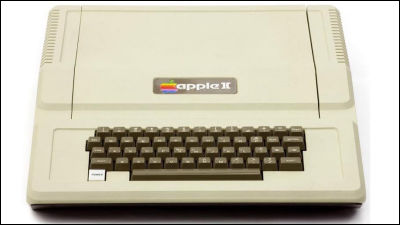A designer who says 'Imitation is design' shows the history of design, engineering and copying

Matthew Strom, who has led design teams at
Copying is the way design works || Matthew Ström: designer & developer
https://matthewstrom.com/writing/copying/

Twentieth-century designer and architect Charles Eames once said, 'We're not making art, we're solving problems.' Around 1950, furniture was a trade-off between price, sturdiness, and style, but the Eameses designed the LCW chair, which was inexpensive, durable, and also incorporated trendy designs. This design was revolutionary at the time, and in 1999, Time magazine praised it as 'the best design of the century.' On the left in the image below is the LCW, which can still be purchased from Herman Miller . On the right is a chair called 'Fathom' sold by a company called Modway.

The Eameses sold the manufacturing rights to the LCW to Herman Miller in 1947, and collectors call the LCWs made in the '40s and '50s the 'originals.' In some ways, the LCWs available from Herman Miller today are copies of the originals. However, Modway's Fathom sells an unlicensed version of the chair that is aesthetically and functionally identical to the LCW, and at a lower price than the earlier LCWs.
From the examples of LCW and Fathom, Strom points out that 'what makes something an 'original' (the first, the best, the most famous, the truest) or a 'copy' (an identical copy, an unauthorized reproduction, an interpretation, a remix) is not always obvious or important.' According to Strom, designers are in a contradictory state of always feeling the need to be original, yet tending to worship pioneering and revolutionary inventors and designers.
Designers often copy and adopt great designs, but they are often infuriated when they see their own work copied. Strom cites Steve Jobs as an example. In the early days of Apple, Jobs imitated many designs from the research and development company Palo Alto Research Center . In particular, Jobs said about the graphical interface (GUI), 'I thought this was the best thing I'd ever seen. It was clear to me that all computers would one day work like this.' When the Macintosh was released in 1984, the GUI was adopted.
On the other hand, Jobs did not like being imitated. He sued Digital Research for copying the Macintosh UI, sued Microsoft for copying the Macintosh OS, and in 2011 filed a lawsuit alleging that the Galaxy series was too similar to the iPhone and iPad.
Apple reveals details with images on what is a blatant copy of the 'GALAXY series' - GIGAZINE

In contrast, computer programmer and game creator John D. Carmack , known for ' DOOM ' and other games, believed that 'copying is a way of learning, a challenge to overcome, and a source of new ideas.' Carmack's early breakthrough, ' Commander Keen ,' is a side-scrolling action game like ' Super Mario Bros. 3. ' In fact, Carmack and his team revealed that they reverse-engineered Super Mario Bros. 3 and copied its technology pixel by pixel in order to complete the side-scrolling action program.
The following movie was created by Carmack to sell Nintendo the idea of a 'PC port of Super Mario Bros. 3'. Although the idea of a PC version of Mario was not accepted by Nintendo, Commander Keen was created based on the knowledge and technology at that time.
Super Mario Bros 3 PC Prototype from id Software - YouTube
In 2005, Carmack spoke about his thoughts on patents. According to Carmack, smart programmers who tackle difficult problems tend to come up with the same solutions as the pioneers, but if the pioneers patent their solutions, the rest of the programmers are in trouble. Carmack said, 'I'm not going to patent it. Taking a patent is like stealing someone's idea,' and he actually refused to patent the big hits DOOM and Wolfenstein 3D and released the source code.
Richard Stallman is a well-known activist who promoted making software widely available for copying. Stallman, who is also a well-known programmer, founded the Free Software Foundation in 1983 and the GNU Project to promote the right of users to freely run, copy, share, and study software.
Founded in 2001, Creative Commons is another important revolution in copying. Countless creative works have benefited from its open source approach to licenses and permissions, Strom said.
Strohm said, 'Copying is fundamental to software development and design. In an industry that thrives on new ideas and novelty, the advent of permissive licenses and version control tools made it seem like imitation was an innovative approach. But the truth is that copying has influenced art and industry for thousands of years. Whether you think copying is valuable or not, whether you think copying is a valuable part of the design community or a curse, every piece of software, hardware, website, and app you use exists because of copying. As long as there is design, there will be copying.'
Related Posts:







